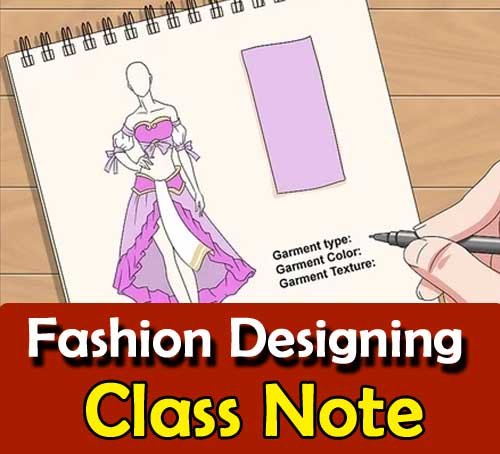Skip to content
Fashion Designing Notes
The process of design thinking seeks to solve real-world problems in a real and practical way, with critical emphasis on human needs and expectations.Since its inception, design thinking methods and tools have focused on the user or the customer. Many of the risks and ambiguity associated with innovation is countered by this human-centric approach. By being involved with the user from the grassroots level and making them an integral part of the process, design thinking is able to achieve creativity and innovation that is applicable and feasible.Design thinking follows several different types of methodologies or approaches. However, all of them keep human needs central to their approach.
THE MAJOR DESIGN THINKING METHODOLOGIES ARE AS FOLLOWS:
- 4D: This methodology divides the design thinking process into 4 stages namely, Discover, Design, Develop, and Deploy. At first, the problem is identified, then it moves to the drawing board and finally, it is put into action in the last stage.
- DOUBLE DIAMOND: Similar to the 4D approach, the double diamond methodology defines its stages as Discover, Define, Develop and Deliver. At first, several solutions are available. Next, we identify priority areas based on user needs. The prototyping takes place by the designer based on the priorities identified in the previous stage. Lastly, we address the constraints and limitations to finalize on the most suitable solution.
- 5D: This methodology of design thinking is a combination of 4D and Double Diamond. But unlike those two methodologies, this approach allows entry during any phase of the design process of the product or service.
- DEEPDIVE: This is more of a tool than a methodology. It is a combination of brainstorming, prototyping and feedback combined in a way that allows managers to develop solutions for different business-related problems and tasks. The various stages in DeepDive ™ are as follows: Understand, Observe, Visualize, Evaluate and Refine, and Implement. First, one needs to understand the needs, constraints, problem areas. Then, it needs to be well observed in the real-world setting among real people. Following that, one begins to envision new, unique solutions which are then tested and finally, commercialized.
OTHER DESIGN THINKING STRATEGIES:
- STAGE-GATE: This methodology of design thinking focuses on the economic and financial aspect of delivering an idea or solution as a product or service. It is like a roadmap which guides the designers and decision makers through the risky process of ideation to production. “Gates” or checkpoints are positioned at strategic locations to evaluate the process from time to time so that growth and profit are not hampered. These checkpoints are manned by specific management authorities or “gatekeepers” who decide whether the project should continue or should be scrapped.
- PENTATHLON: This methodology is one of the most important methodologies in design thinking specifically because it gives special emphasis to the interaction with the environment and with people in the design thinking process.
- SIMON HERBERT: This methodology divides the process into 7 distinct stages namely: Define, Research, Ideate, Prototype, Choose/Objectives, Implement and Learn. Although considered a non-iterative process, the Simon Herbert methodology stages can occur simultaneously.
SOME MORE DESIGN THINKING METHODOLOGIES TO CONSIDER:
- BOOTCAMP BOOTLEG (STANFORD): One of the most well-defined and complete methodologies to exist is the one by the Stanford School. It defines its steps as Empathize, Define, Ideate, Prototype, and Test. Empathy is key to the human-centric approach of design thinking which this methodology incorporates. This methodology is also a non-linear approach to design thinking. One can move forwards or backwards on the stages and contribute throughout the process.
- DONUT: A circular and iterative methodology is the Donut. Also known as the Iterative Design Process Cycle, it begins with the design brief and moves circularly until it arrives at a solution. In the first stage, in-depth research takes place which includes literature reviews, personal observations etc. The second stage involves approaches to problem solving that involve careful analysis of the information and patterns. In the third stage, we identify and prioritize user needs. Finally, in the last stage, the tools or products meet the consumer needs as well as offers solutions to identified problems.
- STUART PUGH: It is a combination of circular and linear design process methodologies. It is useful for engineering problems. It is a core-based model which involves the steps of iteration, testing, and evaluation. In addition to the core, there are surrounding business and design activities present.
- CIRCULAR CHAOS: Another methodology of design thinking which is circular and iterative. It includes company interaction within the circle and environment and people outside.
- SPIRAL: A similar approach to the donut or circular chaos methodology is the Spiral methodology. It supports an incremental process where improvement and refinement of the product take place in increments until it reaches prototyping and finally product initiation.
THE LIST OF DESIGN THINKING STRATEGIES GOES ON:
- DESIGNING FOR GROWTH: This methodology is a complete methodology in itself. It is one of the few methodologies that incorporates a tool in each stage of the design process. This also shows how the design process narrows down as it progresses. It specifically asks four questions: What is? What if? What Wows? and, What Works? These four questions shape the design thinking process.
- NPD: Three different versions of this methodology exist. The one by Booz et. al. incorporates all the basic stages of different models found in design literature. It is based on extensive research via interviews, case studies etc. The NPD methodology of Ulrich and Eppinger focuses on costs and estimations during product development and detailed designing. Andreasen and Hein’s NPD methodology incorporates three different aspects into the design process: market, product, and production. The stages of this model are Recognition of the Need, Investigation of the Need, Product Principle, Product Design, Product Preparation and, Execution Phase.
- V: The V-Model includes a link between the stages through verification and validation. It defines a uniform procedure for the design and development of a product or service. But, instead of moving down in a linear way, it moves upwards after the coding phase to form a distinctive V-shape.
- WATERFALL: The simplest methodology of design thinking, this model is applicable for simple, well-defined problems.
These methodologies are beneficial in aiding different businesses in the process of innovation. A good design thinking approach would be to identify which methodology suits the current needs and problems and seek to find solutions in an iterati





